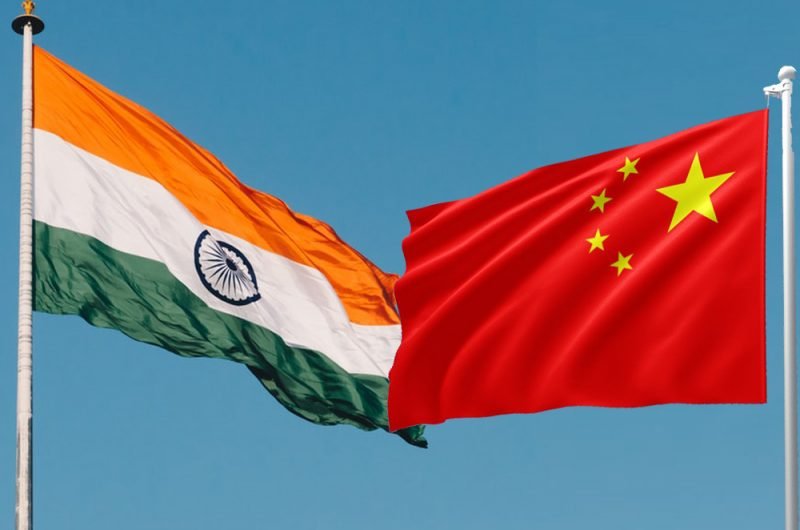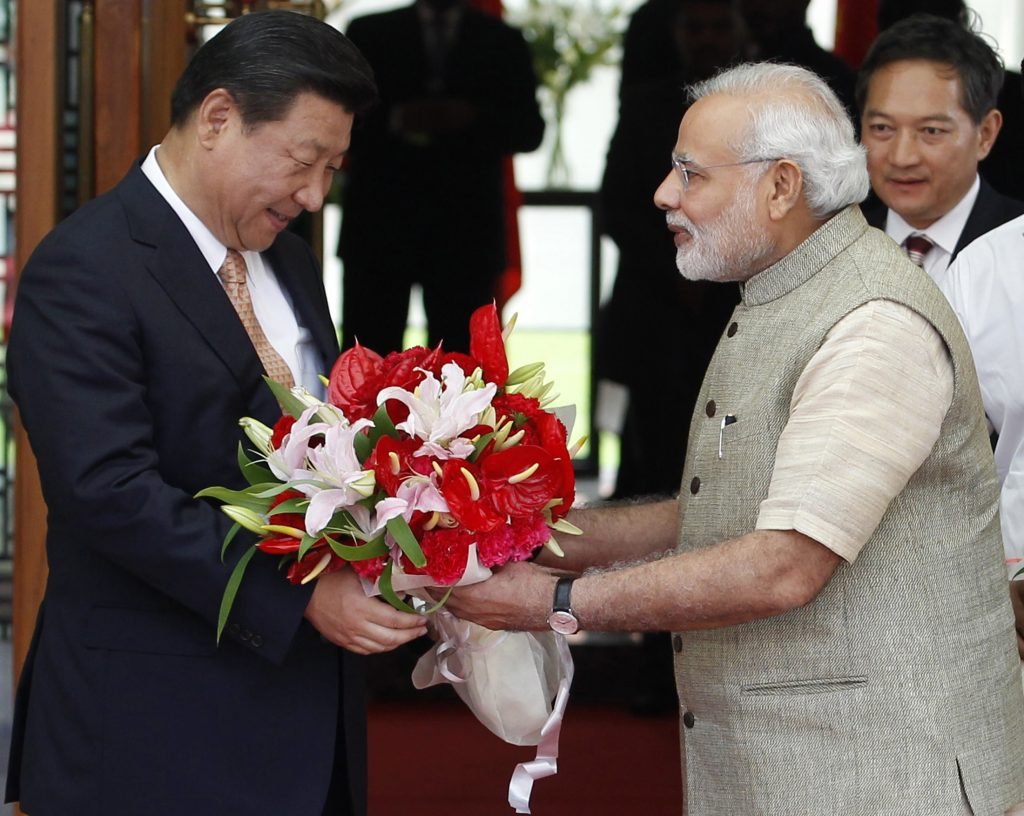India-China relations: looking back to look ahead

Why did the Chinese create a war-like situation the second time since the 1962 war on the Line of Actual Control (LAC) in Eastern Ladakh?
The Early 1950s was the time when India was sleeping and that is when Prime Minister Nehru had the perception of the so-called ‘friendship’ in India-China relations. At that point in time, the Chinese Communist Party (CCP) was also settling into Xinjiang, the CCP actually built a road from Lhasa to Kashgar (inside Xinjiang). The Government of India was not aware of it for many years. In 2013 the CCP blacktopped this road as well as increased the size and capacity of this road. This was the time when India was also building its infrastructure that is Darbuk-Shyok Daulat Beg Oldie, which had already kicked off in 2000. More and more work was happening as part of the border area development. This was the time when the CCP offered a China-Pakistan Economic Corridor (CPEC) from Xinjiang to Gwadar, Pakistan. Therefore to observe India also building roads, that really irked the CCP.
Ever since 2013 when the Chinese announced and operationalized the CPEC and made the financial commitment to CPEC, it is not just the finance but much more importantly the strategic umbrella that they are now providing on the China-Pakistan Nexus. So ever since then, the Chinese have a stake in the entire area through which the CPEC goes which includes Aksai Chin, Pakistan Occupied Kashmir (POK). So the Chinese would like to secure those areas and investments. So this is one among other objectives that they have. For example, when India and Pakistan revived the 2003 ceasefire agreement in February of 2021, the Chinese in their mind must have welcomed it because any comprehensive peace on the Line of Control means the Chinese BRI; case in point CPEC becomes much more secure inside POK.
Another objective is to keep India engaged along the LAC, so as to impede the maritime capabilities of the Indian Navy, in order to ensure that the Chinese Navy is able to dominate the Indian Ocean in a way that challenges the naval superiority of the Indian Navy. Shortly after CPEC became operational, the Chinese reorganized their theatre commands and set up the western theatre command (WTC). The WTC is the largest of the five theatre commands that China has. The WTC has spelt out that it wants to secure its borders with Afghanistan and secure its assets. For the Chinese, a stable, peaceful and friendly political leadership in Afghanistan is a must, especially which would allay their own security concerns in Xinjiang. They would be willing to invest in it. Whether it makes sense as an economic proposition is another issue. The fact remains that for China, the importance of Pakistanis has increased tremendously. This is so because China before has never been a maritime power and that is why Gwadar, CPEC are critical. As long as Xinjiang is unsettled for China, Pakistan utility goes up. So Pakistan is now no longer the India centric utility for China as it had been earlier. For example to fulfil larger strategic goals 62 billion dollars is big money for China to commit towards CPEC. However, in recent years CPEC has slowed down due to problems in the Pakistani system. That is good news for India.

It is an intrusive role also that WTC has. The friction points on the LAC were increasing especially since 2013 when Xi Jinping took over as the President, this as the PLA transgressions into the Indian side of the LAC increased. And one must not forget that all this in Ladakh was observed since 5 May 2020 despite the optimism of the India-China informal summits in Wuhan during 2018 and Mamallapuram during 2019. Since 2017 China had a militaristic agenda as the number of military exercises by the PLA, Chinese Air Force (PLAAF) inside Tibet had increased at least threefold if not more and the nature of exercises showed a qualitative improvement. And they also began inducting their latest aircraft that is the J-20 into the WTC. Earlier the priority was to induct the J-20 in the Eastern and then Southern and then in the end the WTC.
The Chinese got further wary of India when on 5th August 2019 the Modi Government deleted Article 370. It triggered a very negative response from the Chinese government as they issued a statement condemning it. Also, the statement in the Indian Parliament by the Indian Home Minister Amit Shah saying that Jammu and Kashmir mean POK and Aksai Chin as an integral part did not go down well. The decision on the 5th August 2019 to delete Article 370 was the correct thing to do and subsequently the confidence with which India defended its Kashmir decision like in the United Nations really irked the Chinese. Along with that, the image of India has improved globally under Prime Minister Modi, since his swearing-in ceremony on 26 May 2014, so the Chinese wanted to personally humiliate Mr. Modi’s government. This is substantiated by the fact that an article written in October 2020 by the Chinese Institute of Contemporary International Relations, a think tank which belongs to the Ministry of State Security (China’s Foreign Intelligence Agency), the author of this article Hu Shisheng says that since the time China got liberated and India became independent a showdown was inevitable. He also says that the Chinese and Indian Armies will keep pushing each other at times resulting in armed clashes till the LAC can be finalized and another point he makes is the trigger point for the Chinese, which was to stop India’s rise which started in 2014. So essentially what it meant is that the Chinese government is not ruling out a conventional war between India and China. That is armed clashes do not mean Galwan clashes on 15 June 2020.
Both Chinese society and the economy have got more complex, as a result of reform and open doors. From the CCP perspective, it has got harder to manage, so it is no longer a simple command economy. The Chinese economy is dependent on the rest of the world. After the Tiananmen incident in 1989, the Chinese have built up a very strong internal security system. Roughly 20% is the amount that the Chinese have spent more money on internal security than defence. This talks about internal stresses. As the economy slows down after forty years of unprecedented high economic growth, there is stress on internal stability. So similar to Mao, Xi Jinping also felt that the nationalism card should be deployed by amassing a huge PLA force near the LAC. This warlike built up would help divert people’s attention. Mao used this strategy to launch the 1962 war on India, at a time when China was suffering from a famine!

Also, since the time of Mao the Chinese have followed the five finger strategy. Where Tibet is the palm and the five fingers are Ladakh, Nepal, Sikkim, Bhutan and Arunachal Pradesh. So they will attempt to grab land. The discussions on the friction points in Ladakh are still ongoing that is already fourteen rounds of talk between the Indian Army and PLA have happened. There might be disengagement in the time to come but one must never have any illusion that the Ladakh Standoff is going to end. It seems so due to studying the internal dynamics of China that this problem will at least continue till Xi Jinping is not given the third term in October 2022. Hypothetically even if India and China agree on a new equilibrium then also it would not lead to the kind of breakthrough and happy stability (observed till April 2020) which did come with the 1993 border agreement when India was led by Prime Minister Rao.
India’s small nuclear arsenal could be one of the reasons why China started this Ladakh Standoff. This is so because generally numbers of nuclear weapons do not count much but the fact is that India has to deal with not one but two hostile nuclear-armed neighbours in the form of China and its pawn Pakistan. So as I had written in my co-authored article “When Pakistani nuclear weapons are used on India, as per its stated position, India would respond with massive retaliation. It means all or a lot of its arsenal will be used and none would be left to deter the Chinese (Kanwal & Chansoria, 2009). This could give China enough space for blackmail or even bombing of India with its nuclear weapons (Mishra, 2019)” This could happen like China deployed the gigantic nuclear attack aircraft H-6!
Three or four years ago Chinese thinking was that India has already gone into the American camp. They had started saying that India is no longer non-aligned. So this could have been one among other reasons too, for the Chinese to create a war-like situation on the LAC!


















